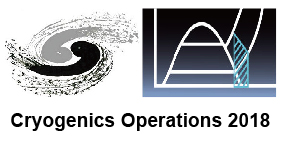Speaker
Zhiwei Zhou
(Institute of Plasma Physics, Chinese Academy of Sciences)
Description
The cryogenic system is one of the critical sub-systems for EAST (Experimental Advanced Superconducting Tokamak) installation, which is used to provide the proper cooling power for the superconducting magnets and its other cold components. It was designed and built by the institute of Plasma Physics Chinese Academy of Sciences itself, and performed its first commissioning in 2005. At present, it is putting into operation for the fourteenth cool-down experiment. In order to promote the refrigeration efficiencies and reliability, the EAST cryogenic system was upgraded gradually from 2012 to 2015, replacing new helium screw compressors and new dynamic gas bearing helium turbine expanders with eddy current brake to improve the original poor mechanical and operational performance. The totally upgraded cryogenic system has successfully coped with various normal operational modes during cool-down and 4.5 K steady-state operation under pulsed heat load from the tokamak in the latest several experimental campaigns. In this report, the upgraded EAST cryogenic system and its new control network will be introduced in detail, and its operation present status which shows a high reliability and low fault rate after upgrade will also be presented. The system maintenance strategy and some future necessary work to meet the higher reliability requirement for future uninterrupted long-term experimental operation will also be proposed in the end.
Primary authors
Mr
Qiyong ZHANG
(Institute of Plasma Physics, Chinese Academy of Sciences)
Zhiwei Zhou
(Institute of Plasma Physics, Chinese Academy of Sciences)
Co-authors
Dr
Bao FU
(Institute of Plasma Physics Chinese Academy of Sciences)
Dr
Liangbing HU
(Institute of Plasma Physics Chinese Academy of Sciences)
Mr
Linhai SHENG
(Institute of Plasma Physics Chinese Academy of Sciences)
Mr
Ping ZHU
(Institute of Plasma Physics Chinese Academy of Sciences)

